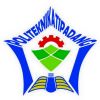Supply Chain Management Agroindustri : Sebuah Literature Review
Abstract
Keywords
Full Text:
PDFReferences
. Al-Fawaeer M, Alhunity S, dan Al-Onizar H. 2013. The Impact of Information Technology in Enhancing Supply Chain Performance: An Applied Study on the Textile Companiesin Jordan. Research Journal of Finance and Accounting, Vol.4, No.8
. Ambe IM. 2014. Key Indicators for Optimising SC Performance. The Case of Light vehicle manufacturers in South Africa. The Journal Applied Business Research. 30 (1) : 277-290.
Aramyan, L. H, Oude Lansink, A.G.M, Van Der Vorst, J.G.A.J.2007. Performance measurement in agri foof supply chan : A case study. Supply Chain Management. An Iternational journal, 12(4)-304- 315
Cabigiosu A, Zirpoli F, Camuffo A 2012. Modularity, Interfaces Definition and The Integration of External Sources of Innovation in The Automotive Industry. Research Policy, 42: 662-675.
Danil MF Dan Hartoyo S. 2014. Produksi dan Pemasaran kako di kabupaten padang pariaman. Provinsi Sumatera Barat. Jurnal Manajemen & Agribisnis. 11 (1) ; 41-52
Deperiky. D. 2019. Analisis Kelembagaan Supply Chain Agroindustri Bawang Merah Di Kabupaten Solok Dengan Menggunakan Metode Supply Chain Operation Reference (SCOR) 10.0. Jurnal Teknologi Pertanian .2301- 4083.UNISI
Deperiky. D. 2019. Sinergi Supply Chain Yang Efektif : Literature Review Agroindustri Bawang Merah Di Sumatera Barat. Journal Agroindustry Technologi : 124-131. IPB Bogor.
Doran D. 2013. Supply chain implication of modularization. International Journal of Operations & Production Management. 23 (3): 316-326.
Dostaller I. 2013. Competing in the global aerospace supply chain: the case of the canadian aerospace industry. Springer Science. 6 (2) :32–43.
Gunasekaran dan McGaughey (2013). Exploring the Relationship between Leadership, Operational Practices, Institutional Pressures and Environmental Performance: A Framework for Green Supply Chain
Hadiguna RA. 2015. Manajemen Rantai Pasok Agroindustri. Padang: Andalas University Press.
Håkan Håkansson, Göran Persson International Journal of Logistics Management, The ISSN: 0957-4093 Publication date: 1 January 2017
Haming D. 2014. Manajemen Produksi Modern : Operasi Manufactur dan Jasa. Edisi Ketiga. Jakarta : Penerbit Bumi Aksara.
Kitchenham L dan Charters M. 2017. Systemic Litetarure Review. Int J Software Engineering Group School of Computer Science and Mathematics. 52 (2017): 792-805.
Kogan K, Tapiero C. 2015. Coordination of co-investments in supply chain infrastructure.Springer Science. 23:2471–2475.
Kusumadewi. 2010. Aplikasi Logika Fuzzy Untuk Pendukung Keputusan. Edisi-2 Jakarta. Graha Ilmu.
Mahsa P, Zamani S, dan Farzianpour F. 2014. Development of factors effective in the success of green supply chain management. American Journal Agricultural and Biological Sciences. 9 (1): 33-34.
Mejza, M.C. and Wisner, J.D. (2001), "The Scope and Span of Supply Chain Management", International Journal of Logistics Management, The, Vol. 12 No. 2, pp. 37-55.
Nepal B. Monplaisir L, Famuyiwa O. 2012. Matching product architecture with supply chain design. European Journal of Operational Research. 216 :312-325.
Nissen ME. 2011. Agent-Based Supply Chain Integration. Kluwer Academic Publishers. Manufactured in The Netherlands. 2: 289–312.
Okoli C. 2017. A Guide to Conducting a Standalone Systematic Literature Review. Communications of the Association for Information Systems. 37 : 879-910.
Pujawan IN. 2017. Supply Chain Management. Edisi Ketiga. Yokyakarta: Penerbit ANDI.
Storey, J., Emberson, C., Godsell, J., Harrison, A., 2006. Manajemen rantai pasokan: teori, praktik, dan masa depan tantangan. Jurnal Operasi Internasional & Manajemen Produksi, 26 (7), hlm. 754 - 774.
Vorst JG, Van Der AJ, Silva CAD, Trienkens JH. 2007. Agroindustrial Supply Chain Management : Concepts and Application Agricultural Management, Marketing and Finance Occasional Paper. Roma : Food and Agriculture Organization of The United Nations.
Wang Y, Wallace SW, Shen B, Choi TM. 2014. Service supply chain management: a review of operational model. European Journal of Operational Research. Collaboration. Gadjah Mada International Journal of Business. 11 (2): 685–698.
Refbacks
- There are currently no refbacks.











_-_Copy10.png)

